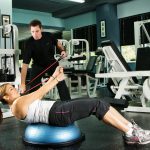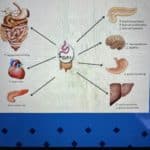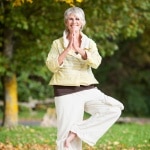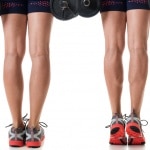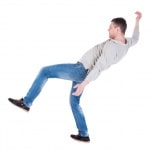Everyone Who Does Fitness Training (of whatever sort or intensity) is an Athlete.
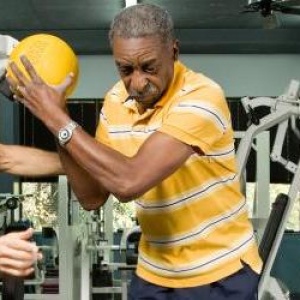
This article, linked below, inspired me to write out a philosophy of fitness training that I have long espoused, though mostly to continuing education participants attending Exercise ETC (Ft. Lauderdale) conferences. In short…All athletes train for one or more of the following reasons.
First, as most of you would understand, it’s to improve performance.
That is, at whatever level of activity at which one operates in life, play or profession, most of us who do exercise do so to help us do those things better, easier, faster, etc. So whether you’re a high school basketball player who wants to improve her skills or her rebounding ability by developing stronger, quicker legs; or a grandpa who wants to be able to shoot hoops with his pre-teen granddaughters; or a mother who simply wants to be able to hike around the local park with a baby in a back-pack,the ability to do what we want to do better and easier amounts to one of the prime reasons people seek professional advice from personal fitness trainers (PFTs).
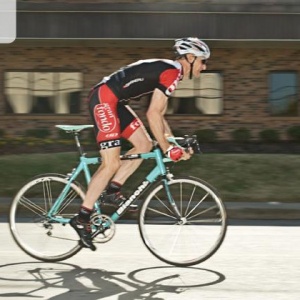
Second, like any athlete, people want to prevent injury…
Especially the kinds of injuries that either result from their activities (or inactivities as is the case for most of the population) or effect their ability to engage in those activities (or inactivities, as the case may be for those who sit at a desk for long periods of time out of necessity.)
Thus people exercise to pre-hab – that is, do exercises to prevent injury – body parts that may be injured by their lifestyle choices. Not only do strong legs help your tennis game; they also reduce your risk of knee problems that are commonly caused while playing tennis. We all understand that a strong core – that is, the muscles of the trunk and hips – prevents many injuries in sport and life, even those that can afflict the sedentary office worker.
Finally, the third element of athletic training is rehabbing an existing injury.
This requires some explanation. For one thing, some injuries are more or less common within certain sports or activities although the actual sport or activity itself may or may not actually cause the injury. What I mean by emphasizing cause is that, say, running stressed the knees and ankles such that those two structures are often the sources of pain and disability from running.
But we now know that (1) not all runners get these injuries and (2) not all injured runners get all running injuries. Therefore, it seems only some runners get injured and only some get certain kinds of injuries.
A qualified fitness professional or physical therapist is able to analyze a person’s posture, mechanics and techniques and guide that person’s training to reduce the sources of dysfunction that uniquely put that athlete at risk for their particular injuries. Perhaps an example is worth making.
Runners are prone to knee problems, often what are referred to as patello-femoral pain syndromes, a diffuse diagnosis of pain and swelling around the knee. Studies have lately demonstrated that gluteus medius dysfunction/weakness is present in these runners compared to uninjured runners. (We see more women with this problem than men just as we see more female athletes tearing their ACLs and having poor mechanics upon landing from a box jump.)
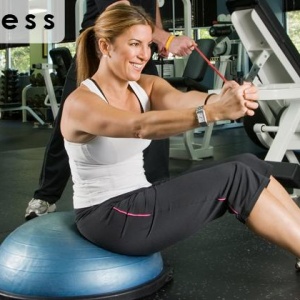
Thus, we observe our injured runner’s squat movement, and if that’s not conclusive, we observe their lunge movement. If that, too, is inconclusive, comparing one leg to the other, we then progress to a one leg squat which is very indicative of gluteus medius dysfunction: the knee wobbles inward as the hip fails to stabilize its path into deeper flexion.
Thus we can conclude that (1) the susceptibility to this injury was either caused by a dysfunctional or weak gluteus medius and (2) that strengthening and training the muscle to do its job will both get the runner back to running and prevent future injury of the same sort.
But this could be totally wrong!
While the exercises for the glute med, as we call it, would be correct, if we did not look further north or south, we might be missing the real causes and therefore only putting a band aid on the injury.
What if the person is an over-pronator, or worse still, just on one foot? While observation of walking technique may give it away, it may only really be noticeable running, and then you’d need a high speed film analysis to catch it. Welcome the smart phone! Yes, slow motion videography is available on your smart phone so you can catch this if you can get behind the person while running.
What if the person’s core muscles – especially the trunk muscles, especially those lateral oblique trunk muscles – are weak? If weak on one side, the body will tilt away from that side and doing so will turn the hip on that side inward which could create an inward torque to the knee on that side opposite the weak oblique! In other words, good fitness training tries to identify all the links in the chain that could precipitate an injury in order to rehab it and prevent future injury.
And the same could be said for the grandmother who simply wants to hold her infant grandchild. In other words, my philosophy of training is that everyone is an athlete: some are trying to improve performance, some are trying to prevent injury, and some are trying to rehab an injury.
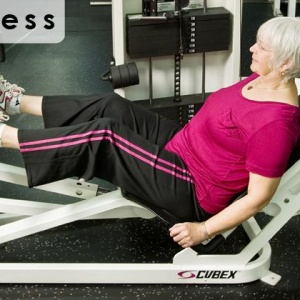
There is one other major reason people do fitness training: for looks.
And while I’m not averse to helping folks lose weight or tone up or even shape up, I, personally and professionally, try to do so in a way that treats them like the athletes they are. Yes, there are aesthetic athletes, like dancers, gymnasts, divers, etc, who both have to perform as athletes while looking good. And, yes, there are athletes who want to look good while performing as athletes but do so for ego rather than performance (football players don’t need cut biceps; if they did, then all those great footballers from before 2000 or so who never lifted for looks would not be great.) [I direct you to photos of Muhammad Ali in his youth. He had a great physique but he was not as ripped as modern boxers. And he was way better than all of them.]
But again, it’s my main thesis, my driving ideology, that everyone is an athlete and we in the fitness world should remember that even if we are helping their physiques for looks. Because ultimately we all have to move better, easier, more efficiently while preventing or dealing with whatever ails us.


